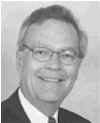|

|
Up,
Up and Away:
Ballooning
in Virginia
This spring, there was enough
hot air emanating from Richmond to keep balloonists in the air for a long time. It seems appropriate, then, that one of the earliest mentions of hot air balloons occurs in a letter directed by
John
Fitch, inventor of the steamboat, to Thomas Jefferson in 1792. Fitch was indigent and could not get any financial backing for his invention because “mankind was running mad about beloons and fireworks.” Fitch never sent the letter, and six years later committed suicide. His invention would have to wait several decades before it was put to practical use by Robert Fulton.
Nine years before Fitch’s letter, in France, Joseph and Jacques Montgolfier made the first successful untethered ascent with passengers in a hot air balloon. A crowd of 150,000
was enthralled. The flight lasted 25 minutes; the balloon carried the brothers 5.5 miles and reached a height of 3,300 feet. (“The Montgolfier Brothers and the First Hot Air Balloon,” Tech Directions, October 2002).
By the time Fitch complained to Jefferson about people neglecting the steamboat for the more frivolous hot air balloon, such demonstrations in the U.S. were drawing
thousands as well. It took a while to develop more practical applications, but by the time the Civil War broke out, both Union and Confederate reconnaissance balloons floated through the skies over the commonwealth. In the late summer of 1861, after a demonstration by
Thaddeus
Lowe, President Abraham Lincoln organized the Balloon Corps, a civilian organization. Lowe made his first reconnaissance trip on September 24, 1861. Because he didn’t have permission for a portable gas generator and had to use gas from municipal lines in Washington, D.C., Lowe couldn’t travel far. He did, however ascend to 1,000 feet near Arlington and began telegraphing information about Confederate troops encamped near Falls Church.
Lowe’s success prompted the Secretary of War to order more balloons. In all, the Balloon Corps fleet consisted of seven hot air balloons. A second balloonist,
John
LaMountain, is credited with introducing aerial reconnaissance. He made two ascents at Fort Monroe in Hampton, and the
New York Times reported he could see Confederate camps at the James River north of Newport News
("Balloons in the Civil
War," U.S. Centennial of Flight Commission).
In response to these efforts, Confederate soldiers had to take evasive action, blacking out their locations and setting up dummy gun emplacements and encampments. The Confederacy also created a smaller version of the Balloon Corps. The first Confederate balloon was launched in 1862 by Captain John Randolph Bryan. It was a true Montgolfier balloon filled with hot air, rather than gas. Two more gas balloons were built with dress silk, stoking the legend that the ladies of the Confederacy had donated their attire (not true.)
While smaller versions known as “fire balloons” were often released at 4th of July celebrations in the late 1800s, hot air balloons continued to be used for military purposes. The Japanese released more than 9,000 remote-controlled balloons that landed between Alaska and Mexico during World War II. These incendiary balloons did not do the damage the Japanese expected, although there was one lethal incident when a family was killed as they dragged a balloon into the woods.
It wasn’t until after World War II that hot-air ballooning as a recreational sport took off. Don Picard is considered one of the founders of modern ballooning. He made the first
post-World War II flight in a captured Japanese balloon in 1947 ("Don Piccard – 50 Years of Ballooning Memories," Balloon Life, July 1997). Piccard also formed the first balloon club, the precursor to the Balloon Federation of
America, which has 3,000 members.
Today in the Old Dominion you can float over Lynchburg, Front Royal, Middleburg and Charlottesville – Jefferson’s old haunts – for approximately $185 to $210 per person. A balloon-related Web site,
Blastvalve.com, lists 10 companies in Virginia that will take you aloft. Rides are usually offered in the early morning or evening when the air currents are best for the sport. Hot air balloons, though, are a bit erratic in choosing where they land. This has resulted in the tradition of carrying a bottle of champagne in the gondola to calm landowners who might not appreciate a hissing aircraft. A chase car follows the balloon to ferry passengers back to their starting point.
NEXT: From Burke & Herbert Bank to Shirley Plantation: Virginia’s Oldest Institutions
--
August 28, 2006
(Got
a question? Check out Ask
a Librarian Live.)
|
|
